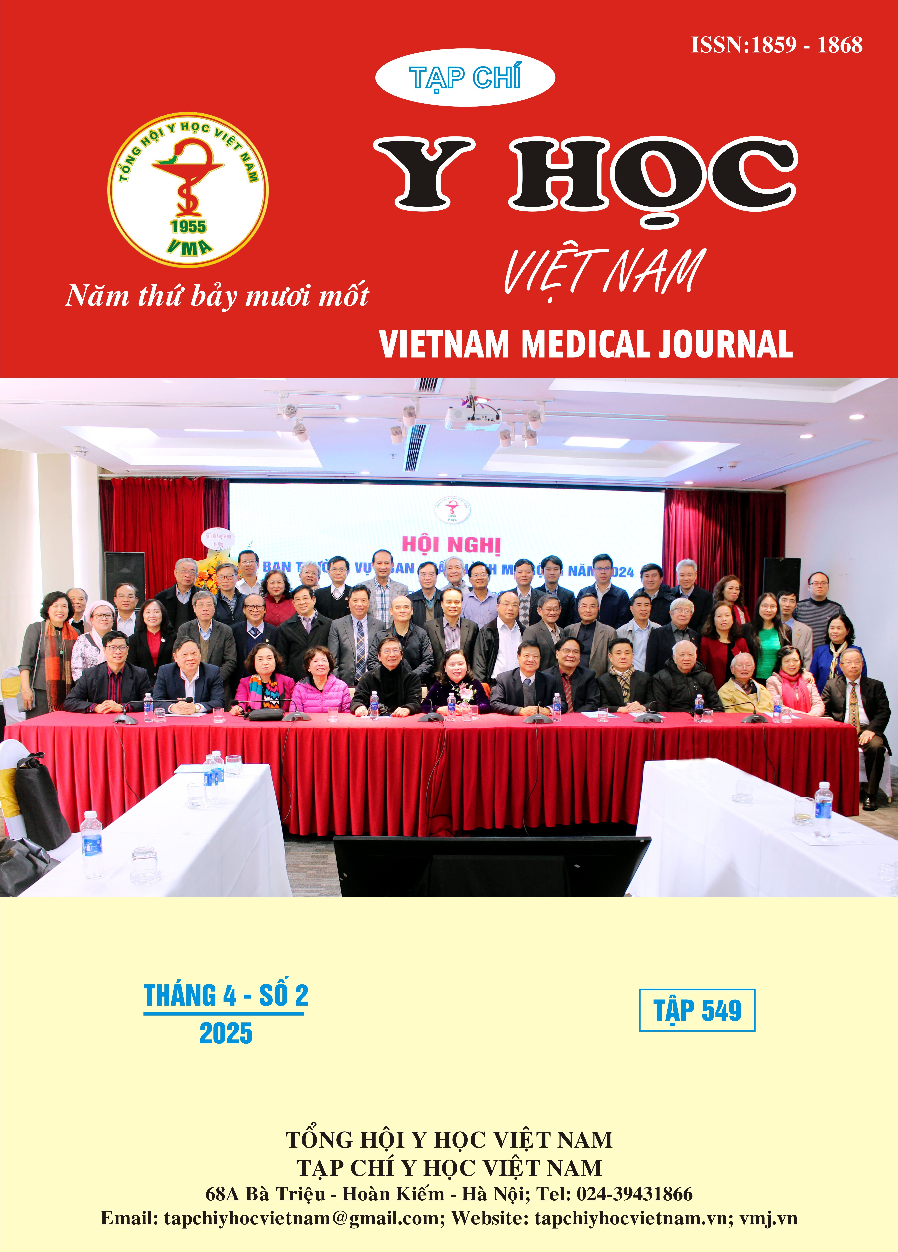SO SÁNH CHẤT LƯỢNG TỈNH MÊ CỦA DESFLURANE VÀ SEVOFLURANE TRÊN PHẪU THUẬT NỘI SOI MŨI XOANG
Nội dung chính của bài viết
Tóm tắt
Đặt vấn đề: Gây mê lưu lượng thấp (GMLLT) mang lại nhiều ưu điểm như giảm thiểu ô nhiễm môi trường, ít thất thoát nhiệt và độ ẩm, chi phí thấp do sử dụng ít thuốc mê. Desflurane có độ hòa tan trong máu thấp, vì vậy đạt được tốc độ khởi mê nhanh, hiệu quả hồi tỉnh sớm và có thể được sử dụng an toàn trong GMLLT. Mục tiêu: So sánh thời gian tỉnh mê, chất lượng tỉnh mê, thể tích thuốc mê tiêu thụ ở nhóm Desflurane lưu lượng thấp với nhóm Sevoflurane lưu lượng trung bình trên phẫu thuật nội soi (PTNS) mũi xoang. Phương pháp: Nghiên cứu ngẫu nhiên có nhóm đối chứng, mù đơn trên người bệnh (NB) có chỉ định PTNS mũi xoang. Kết quả: Thời gian tỉnh mê ở nhóm Desflurane ngắn hơn so với nhóm Sevoflurane (5,9 ± 1,1 phút so với 8,7 ± 1,4 phút; p < 0,001). Thời gian định hướng bản thân địa điểm, thời gian đạt điểm Aldrete ≥ 9 ngắn hơn ở nhóm Desflurane (lần lượt là 7,6 ± 1,3 phút so với 11 ± 1,6 phút; p < 0,001 và 8,7 ± 1,3 phút so với 12,3 ± 1,4 phút; p < 0,001). Tỉ lệ kích thích sau tỉnh mê và kích đường thở không có sự khác biệt ở 2 nhóm. Thể tích thuốc mê tiêu thụ ở nhóm Desflurane cao hơn so với Sevoflurane (46,6 ± 12,4 mL so với 29,5 ± 10,5 mL; p < 0,001). Kết luận: Duy trì mê với Desflurane ở NB trải qua PTNS mũi xoang giúp rút ngắn được 32,3% thời gian tỉnh mê và có chất lượng tỉnh mê tốt hơn so với Sevoflurane.
Chi tiết bài viết
Từ khóa
Desflurane, Sevoflurane, gây mê lưu lượng thấp, phẫu thuật nội soi mũi xoang
Tài liệu tham khảo
2. Choi GJ, Baek CW, Kang H, et al. Emergence agitation after orthognathic surgery: a randomised controlled comparison between sevoflurane and desflurane. Acta Anaesthesiol Scand. Feb 2015;59(2):224-231.
3. Gangakhedkar GR, Monteiro JN, et al. A prospective randomized double-blind study to compare the early recovery profiles of desflurane and sevoflurane in patients undergoing laparoscopic cholecystectomy. J Anaesthesiol Clin Pharmacol. Jan-Mar 2019;35(1):53-57.
4. Lineburger EB, Modolo NSP, Braz LG, et al. Minimal fresh gas flow sevoflurane anesthesia and postoperative acute kidney injury in on-pump cardiac surgery: a randomized comparative trial. Braz J Anesthesiol. Jan-Feb 2023;73(1):46-53.
5. Lodh N, Parmar V, Oza V, et al. A comparison of emergence behavior and cost effectiveness in tonsillectomy patients undergoing general anesthesia with desflurane versus sevoflurane. Archives of Anesthesiology and Critical Care. 2022;8(3):236-239.
6. Saha M, Saxena KN, Wadhwa B, et al. Comparative study of recovery of airway reflexes and cognitive function following sevoflurane versus desflurane anaesthesia. Indian J Anaesth. Apr 2021;65(4):282-288.
7. Taskin D, Gedik E, Kayhan Z, et al. Effects of minimal flow sevoflurane or desflurane anaesthesia on hemodynamic parameters, body temperature and anaesthetic consumption. Turk J Anaesthesiol Reanim. Oct 2020;48(5):356-363.
8. Uppala H, Kumar MA, Ansari MMM, et al. Comparative study of recovery parameters of desflurane and sevoflurane in functional endoscopic sinus surgery. ScienceRise: Medical Science. 2022;(2(47)):4-10.


